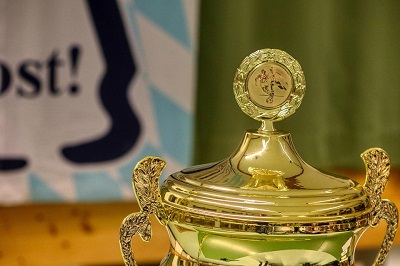The Cricketeer Scoreboard:
An Intelligent Tool for Every Cricket Fan to Understand
Scoreboard:
Cricket is one of the most loved and followed sports in the world. It has a very unique and intricate scoring system. Whether you are a casual viewer, a passionate fan, a Scoreboard someone looking to better understand the game, you play a crucial role in tracking the live action. In this article, we will take a deep dive into what a cricketer is, how Scoreboard works, and why it’s indispensable to fans and players alike.

What is a Cricketer’s Scoreboard?
Scoreboard:
A cricketer scoreboard is an integral part of cricket matches, whether at the professional or grassroots level. It gives real-time information regarding the game by providing critical statistics like the runs scored, wickets taken, overs bowled, and other key data that reflects the performance of teams and individual players.
Modern can be physical (as in stadiums) or digital (visible on broadcasting networks or online platforms). The basic purpose remains the same: to inform the audience of the current state of the game.
Key Features of a Cricketer:
Scoreboard:
- Runs Scored: The most important feature on any scoreboard, this tells the number of runs a team or individual batsman has scored so far. It can also display boundaries (4s and 6s) to give fans an idea of how aggressive a batsman is.
- Wickets Taken: This illustrates the number of wickets the team has lost or the total number of wickets a bowler has taken. Wickets are an important part of cricket because they signify a turning point in the game, such that a new batsman who enters the field may alter the dynamics of the match.
- Overs Bowled: This indicates how many overs have been bowled in the current innings. Cricket matches are divided into overs (6 legitimate deliveries by a bowler). For example, in a 50-over match, there will be 50 overs for each team to bat. Overs are especially important in limited-overs cricket formats.
- Batsman’s Runs: The runs by individual batsmen are shown, along with the total score of the team. This aids in following how each player is doing. It also shows the number of balls they have received, thereby showing their strike rate.
Bowling runs and overs:
The performance of the bowlers determines the course of the match, so modern scoreboards display the overs bowled by a player and the number of runs he has conceded.
- Partnership: A partnership score may also be displayed which depicts the runs scored by two batsmen who are presently on the field. This is an essential parameter as partnerships usually make a decisive difference in any cricket game.
- The Match Status: Scoreboards will even show whether the match is in progress, or weather, bad light, etc has paused the match. Match status becomes the key for viewers watching remotely.
- Extras: At some point, the teams gain runs that are not generated because of the batsman himself like a no-ball, wides, or a bye. Such runs have been added to the count as “extras.” In the, the counts also reveal the extras.
Traditional versus Digital:
Scoreboard:
The traditional system is updated manually by an official scorer. This is usually observed during matches at the local and club levels. It is a large wooden board with changing numbers that reflect the current status of the match. It is updated by the actual movement of the numbers.
On the other hand, digital technology has changed the way scores are displayed. They are often seen in international stadiums and are updated inreal-timee and with high accuracy. Digital devices are equipped with LED or LCD screens that display detailed statistics, including player names, current careers, and shooter information, making it easier for the public to follow.
Importance of the Cricketer:
Scoreboard:
A scoreboard is crucial for fans, broadcasters, coaches, and players. For fans in the stands, it provides a quick overview of the match’s status. For television broadcasters, scoreboards are an integral part of the viewing experience, as they allow viewers to track the game’s flow. Players and coaches, help them assess the situation, and strategize accordingly.

Furthermore, for such a data-intensive sport like cricket, accuracy is very much necessary for its analysis. Post-match statistics regarding runs, wickets, overs, and performances of players are essential for the analysis of a match, player evaluation, and even record-keeping over time.
A scoreboard in cricket tracks the key statistics of the match, runs, wickets, overs, and their performance, and thus helps a player as well as the spectators follow the game in its proper way.
FAQs:
Scoreboard:
1. What does overthroww” mean on the scoreboard?
Overs bowled” is the term for the number of six-ball units of play that a bowler has delivered in the current innings. It is essential for handling batting and bowling strategies for both teams.
2. Extras in cricket are runs awarded to the batting side?
That does not arise from the bat. These comprise wides, no-balls, byes, and leg byes, and they are reported separately on the scoreboard.
3. A traditional is updated manually whereas?
In a digital scoreboard, the electronic screens display data live, making it faster and much more detailed. Digital can also show advanced metrics such as batting strike rates and partnership statistics.
4. Of course, match analysis can also be used.
Scoreboards do have detailed statistics in regard to each game, and there is enough information for both analysts and coaches to review games while developing a strategy for subsequent matches.
Conclusion:
Scoreboard:

A cricket scoreboard is a crucial component of every cricket match as it provides real-time statistics on runs, wickets, overs, etc. As the game has progressed, have also evolved. Today, digital and automated systems provide more complete information than ever before. The scoreboard is your window to the current match, regardless of whether you are watching it at the stadium, on TV, or online. It is, therefore, an essential tool for understanding and appreciating the game of cricket.

